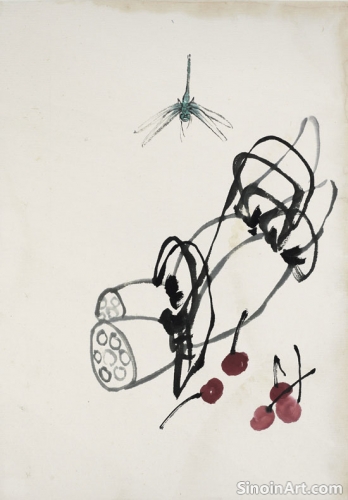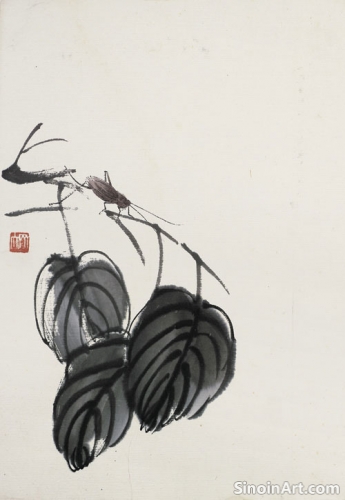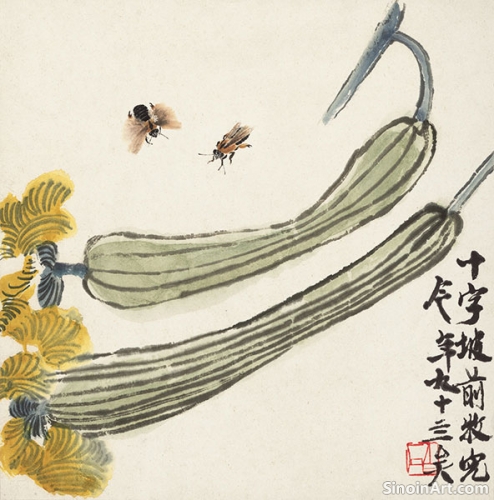The Brushstrokes of Xieyi: Mastering Spontaneity
|
The beauty of Xieyi painting lies in its apparent spontaneity, but behind this seemingly effortless style is a lifetime of dedicated practice and a deep understanding of brushwork. Each stroke, each application of ink, is a deliberate act, imbued with the artist's intent and emotion. Mastering the various brushstrokes is crucial to creating a compelling Xieyi painting, transforming a simple sketch into a powerful expression of artistic vision. It is a dance of the brush on the canvas.  The foundational brushstroke in Xieyi is the “zhongfeng” or “central tip” stroke. This stroke involves using the entire body of the brush to apply ink evenly, creating a full, rounded line. The central tip stroke is used to create bold, dynamic lines and to build up form. The force and direction of the stroke are key to conveying the spirit of the subject. It’s essential to maintain balance and control with this stroke.  Another essential brushstroke is the “cefeng” or “side tip” stroke. This stroke involves using the side of the brush to create dry, textured lines. It’s ideal for capturing the roughness of tree bark, the ruggedness of rocks, or the feathers of a bird. The side tip stroke brings a sense of texture and dimension, contrasting the smoother lines created with the central tip stroke. Mastering the side tip technique is essential for creating variations in texture.  The “zhanbi” or "dotting" technique is crucial for adding detail and texture to Xieyi paintings. This involves applying dots of ink with varying pressure and size, creating a sense of vibrancy and energy. The dots can be used to suggest leaves, flowers, or even raindrops, giving the painting a sense of depth and complexity. The placement and variety of dots adds interest and detail to the artwork. In addition to the individual brushstrokes, controlling the amount of ink and water on the brush is also critical in Xieyi painting. Variations in ink density create subtle tonal variations, adding depth and dimension to the painting. The blending and layering of ink washes create a dynamic interplay of light and shadow. Mastery over the control of ink density is what truly makes the painting come to life. By mastering these various brushstrokes and ink control techniques, the Xieyi artist can effectively capture the spirit of any subject, from a delicate flower to a powerful mountain. It’s a skill that develops over time through dedication and practice. Through the brushstrokes, an artist can channel their emotions, thoughts, and feelings, breathing life into the painting. |
Tag : Xieyi Brushwork, Chinese Ink Techniques, Spontaneous Painting, Freehand Brushstrokes, Ink Painting Methods
Related information
- The Spiritual and Philosophical Dimensions of Xieyi
- The Influence of the Seal Script on Xieyi
- Xieyi vs. Gongbi: Two Paths of Chinese Painting
- Modern Interpretations and Contemporary Xieyi
- Xieyi Figures: Capturing the Essence of Humanity
Xieyi painting is deeply rooted in Chinese philosophy, particularly Daoism and Chan Buddhism, emphasizing the importance of spontaneity, mindfulness, the pursuit of qi or vital energy, and the spiritual significance of emptiness in art.
The Seal Script (zhuànshū) influences Xieyi painting through its emphasis on balance, flowing lines, symmetry, organic forms, and its use in artist's seals, inspiring the composition, line quality, and overall design, while also deepening the understanding of brush control, and ink application within the Xieyi tradition.
This article contrasts Xieyi painting with Gongbi painting, highlighting the differences in their techniques, brushwork, use of color, and overall artistic philosophies within the Chinese painting traditions.
Modern Xieyi painting is adapting to contemporary contexts through incorporating new techniques, subject matter, and philosophical ideas, while remaining grounded in the core principles of spontaneity, expression, and the pursuit of qi, and pushing its boundaries into the modern art world.
While less common than landscapes and flowers/birds, figure painting (人物画, renwuhua) also has a place within the Xieyi tradition. These works often focus on capturing the character and spirit of the individual rather than simply portraying a likeness. The focus is on expression and inner qualities.